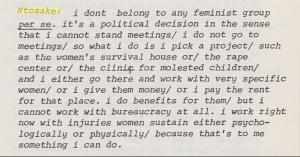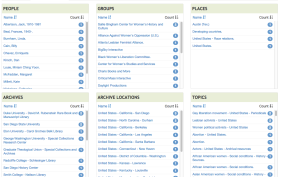Ntozake Shange’s choreopoem “For Colored Girls Who Have Considered Suicide/When The Rainbow Is Enuf” struck me to my core. The choreopoem debuted in 1976 which amazes me because it holds so much significance and truth in relation to the age we currently live in. During this time, the choreopoem’s format and subject matter was revolutionary.
The stories and emotions of seven black women telling their truths and experiences of abuse, rape, abortion, infidelity, courtship and the bonds that are forged between them is so extremely powerful and made me reflect on the relevance this choreopoem will hold for eternity as a part of history. The content of the choreopoem is not only still relevant to society today, but it’s also shedding a light on the urgent reminder that women of color are still being mistreated and disregarded by society, even during the #MeToo era.
Something this choreopoem made me think a lot about was theme of universality and “oneness.” After each woman speaks her truth, another woman tells hers, sometimes interjecting for questions. It truly makes you visualize one woman speaking, while the other women stay on stage behind her. This makes “For Colored Girls Who Have Considered Suicide/When The Rainbow Is Enuf” feel like a conversation, as opposed to a set of a few monologues–ultimately reinforcing the message that these experiences are universal, not individual. These struggles were felt by the entire group, not just applicable to that one woman. In moments like this throughout the choreopoem, I was able to feel the power of both individual experience as well as a sense of collective empathy which reminded me that these systematic failures and social problems are deeply rooted in history.



